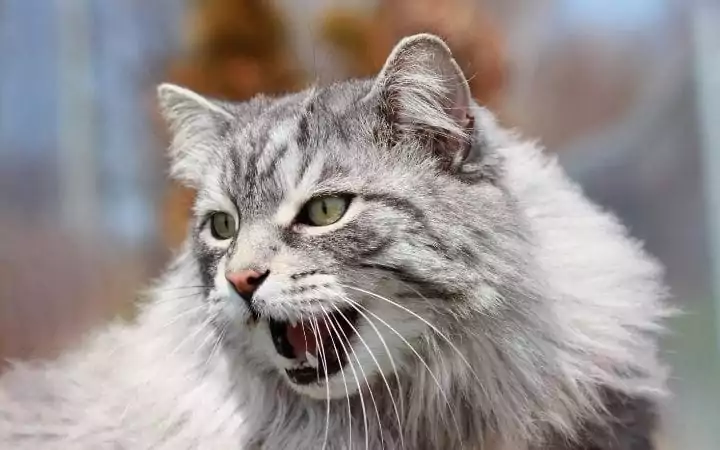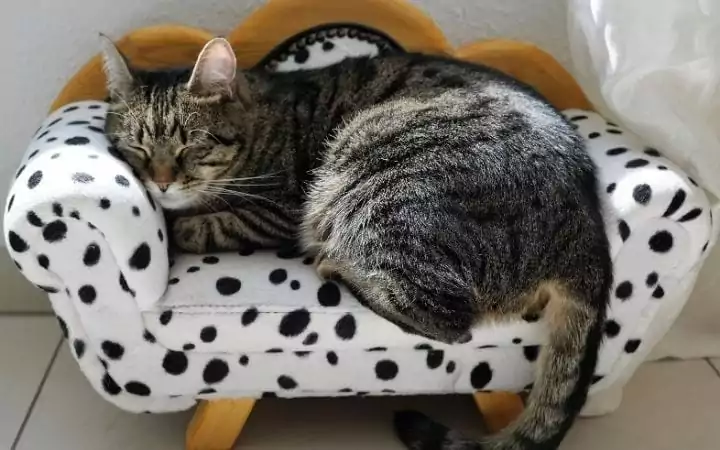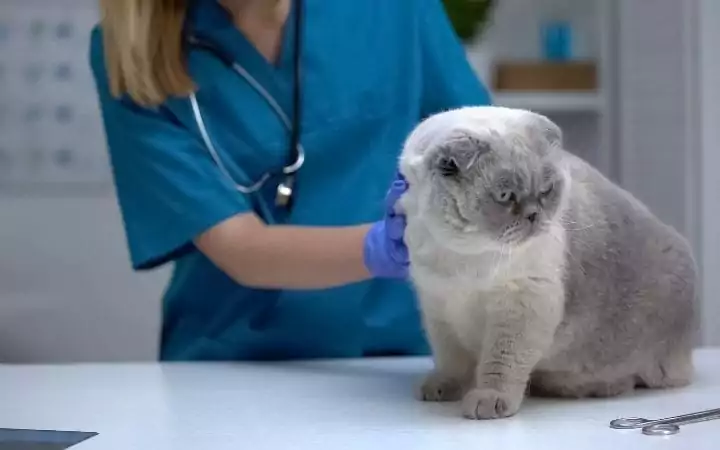Very few cats love going to the veterinarian. For most cats, it can be an overwhelming and scary experience. No matter how hard the veterinarian and their teams work to make it stress-free. So is there anything that can help these animals?
For some cats, administering Gabapentin can aid by making a much less stressful experience as well as calming some cats, Gabapentin is also used to manage pain and seizures. This is a drug with many uses. So take a read below to learn more!
What is Gabapentin and What are the Uses of Gabapentin for Cats?
Gabapentin is a structural analog of gamma-aminobutyrate (GABA). GABA is an inhibitory neurotransmitter. The mechanism of action of Gabapentin is however not completely understood. It was designed to mimic the GABAs mechanism. But, unlike GABA, Gabapentin does not bind to the GABA receptors as expected. It does still work very well as a useful drug.

Gabapentin is therefore widely used in both human and veterinary medicine. It is used as an anti-seizure drug in animals suffering from epilepsy, often alongside other drugs. It is also used to treat chronic pain – primarily nerve pain and arthritis in older animals. A newer use of Gabapentin is to treat stress, fear, and anxiety in cats.
It is not labeled for use for anxiety but is used increasingly for this in veterinary medicine. Recent studies from 2017 – done on cats – showed that the administration of Gabapentin before a veterinary exam, caused the cats to be far more relaxed. Other findings included:
- Owners gave significantly lower stress scores during transportation and examination to the cats who received Gabapentin.
- For 20% of the cats, an examination was possible only when they were medicated with Gabapentin.
Generally, reports show that a lot of cats respond well to Gabapentin. This gives the veterinarian a little help when performing a thorough exam. As well as in cases where drawing blood is necessary or simply a nail trim. Most importantly it makes the experience more comfortable for the cat.
It is important to remember though that not all cats benefit from receiving Gabapentin. Some cats won’t be noticeably calmer, meaning sedation can be necessary. There are also some side effects to consider. So always consult your veterinarian before administering any kind of medication.

How is Gabapentin Given to Cats?
Gabapentin is administered orally. Either in the form of a capsule or tablet. Often the capsule can be broken open and the powder mixed with some wet food or tuna juice.
Giving Gabapentin for cats on an empty stomach can cause the cat to vomit. Which is why it is recommended to always give it with food.
If the aim is to calm the cat before a visit to the vet, the drug should be administered 1-2 hours before the appointment. Alternatively, 1-2 hours before traveling, if this also stresses your cat.
If you are giving your cat Gabapentin every day for epilepsy or chronic pain, it’s important to not miss a dose. Especially in epileptic animals as sudden withdrawal can cause seizures.
But, if you do miss a dose – and you’re close to the time for the next dose – skip the dose you missed. Consult your veterinarian if you are in any way in doubt whether you should give the dose or not.
Capsules and tablets should be stored at room temperature and away from moisture.

What is the Right Dosage of Gabapentin for Cats?
Medication should never be administered without first consulting your veterinarian. Especially as dosage can vary a lot, depending on why it is being given.
- For seizures: 5 – 10 mg/kg every 8 to 12 hours
For some cats, this dosage needs to be increased to 10 mg every 6 hours.
- For pain control: 1.25 – 2.50 mg/kg every 12 hours.
Some vets may even recommend 50mg 1-3x daily if necessary.
- For anxiety: 100 mg 1-3 hours before the anxiety triggers.
In some cases, your veterinarian might recommend an extra dosage the night before as well.

What are the Side Effects of Gabapentin for Cats?
The most common side effects when using Gabapentin include:
- Sedation (sleepiness)
- Ataxia (lack of voluntary coordination of muscles)
- Diarrhea
Gabapentin is however generally considered a well-tolerated drug with few adverse effects.
Pets that are allergic should not take the medication. In animals with known kidney diseases, you also need to be cautious. It is not recommended to give it to pregnant animals either as it may affect fetal development.
Some forms of liquid Gabapentin contain xylitol. This is toxic to dogs, so it is generally not recommended if a dog is present in the household.
What are the Gabapentin Drug Interactions?
Gabapentin is most effective when administered along with another painkiller. Like hydrocodone or morphine. But, after some time, the second narcotic can often be removed as part of the therapy. With Gabapentin remaining as the only pain reliever.
Care should be taken though as long term pain therapy can be hard on the kidneys and the liver. It is thus important to always tell your veterinarian about any medication your cat is taking. This includes vitamins, supplements, and/or herbal medication.
There need not to be any specific monitoring taking place. Your veterinarian will only need to monitor your pet every now and then to be sure the medication is working as it should.
Of course, at home, monitor your pet for any serious side effects. If you suspect an overdose, call your veterinarian immediately.

Summary
A visit to the veterinarian is a part of life for all animals, including cats. But, no one likes to see their furry friends in discomfort. This includes being scared. Gabapentin can be a huge help in some of these cases, for both cats and veterinarians.
It makes for a less stressed cat and an easier job for the vet. Which will also mean less stress for the owner, working to everyone’s benefit.
Gabapentin for cats can also in some cases provide long-term therapy for seizures and pains. Helping your cat to live its best life, free of as much discomfort as possible.
